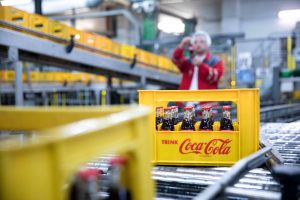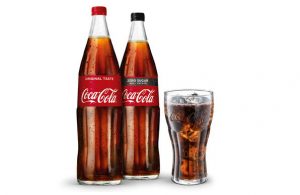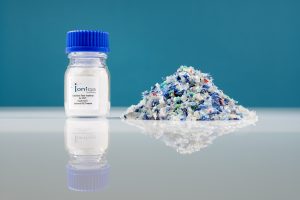ADVERTORIAL
Used plastics must not become waste – they belong back in the circular economy. The goal is a world without waste, not a world without plastic…
For years there has been a rumor in the media that Coca-Cola Germany is becoming increasingly less involved in filling and offering reusable bottles. However, the truth is that reusable packaging is and remains an important part of our range. By introducing the first small 200 ml Coca-Cola glass bottle 90 years ago, the company created the reusable bottle deposit system for soft drinks in Germany.
Coca-Cola also developed the first reusable plastic bottle, actually in Germany, and introduced it to the German market as well. Currently, alongside the one liter PET reusable bottle, we also have reusable glass bottles in 200ml, 250ml, 330ml, 500ml, 700ml and 750ml sizes. If you count all of our beverages in all of their various sizes, we offer 64 products in reusable packaging.

Creating food-safe packaging from different kinds of plastics
(c) Coca-Cola Deutschland

(c) Coca-Cola Deutschland
Coca-Cola’s share of refillable packages significantly higher than industry average
Today, we are the largest provider of soft drinks in reusable packaging in Germany. In the last three years alone, Coca-Cola European Partners Deutschland GmbH (CCEP DE) has invested over €200 million in the renewal and expansion of our reusable bottle pool and in new reusable crates. In 2018, our volume share of reusable bottles was still 39.9 percent. This places Coca-Cola clearly higher than the industry average for soft drinks.
This year, we will also be bringing two new production lines for reusable packages online. With the one liter glass bottle for Coca-Cola Classic and Coca-Cola Zero Sugar, we are currently introducing a new reusable bottle to the German market.
We believe in a mixture of single use and reusable packaging
Consumers make pragmatic purchase decisions depending on life circumstances and the particular occasion. That is why we rely on a mixture of single use deposit bottles and reusable packaging in a variety of sizes. This way we can offer our consumers a selection – not only in terms of our products, but also in terms of packaging.
From an ecological perspective, we take all of the impacts of our packaging into consideration across the entire life cycle of the product. Building on that principle, we would like to continually improve all ecological aspects of all of our packaging, among other processes. For this reason, we have previously optimized both our reusable and single use bottles by, for example, making them lighter or using more recycled material in the production of single use packaging. This also applies to our bottles made of PET plastic.
99.9 percent of our products are required to be processed through the deposit system. Our goal: A circular economy

Creating food-safe packaging from different kinds of plastics
(c) Coca-Cola Deutschland
Plastic is an important raw material but we need to handle it in the right way. Used plastics must not become waste. They belong back in the circular economy. Our goal is a world without waste, not a world without plastic. We want to ensure that none of our packaging ends up in the ocean or the countryside. For this reason, we have set ourselves the goal of globally ensuring by 2030 that for every piece of packaging brought to market, one piece is recycled. Our CEO, James Quincey, highlighted this with the initiative “A World without Waste” at the World Economic Forum 2018. In Germany, the material cycle is already nearly closed thanks to the deposit system: all of our PET, glass, tin and aluminum packaging is recyclable. Of this, 99.9 percent of all packages are sold with deposit. The packaging comes back via the deposit system and is refilled (reusable) or recycled (single use).
In order to completely close the circle of materials, we also utilize old material from used PET soft drinks bottles in the production of new soft drinks bottles. It is our goal to increase the average proportion of recycled PET in all of our single use bottles from current 29% to 50% by 2025.
Our cooperation with Ioniqa Technologies and Loop Industries
Presently, however, there is not enough high-quality PET recyclate available for food packaging. The demand for this single-origin recyclate is very high. That is why we have invested in an innovative recycling process: Together with Ioniqa Technologies and Loop Industries, we are working on manufacturing food-safe packaging from plastics with different characteristics, colors and qualities.
There is no silver bullet, but there are many paths leading in the right direction. We are investing further in reusable bottles, increasing the proportion of recycled PET in single use bottles and closing the reusable material cycle in our production.

Uwe Kleinert
(c) Coca-Cola Deutschland
Uwe Kleinert is Head of Sustainability and Corporate Responsibility, Coca-Cola GmbH
